It always amazes me how a game such as tennis has so many different surfaces to play on. Go to any country, any park, any tennis center, and no doubt all the courts will be a different surface. Compare that to a game like basketball or soccer where the surface is the same anywhere in the world.
In this article we look at what tennis courts are made of and also why there is such a difference in surface. We will explore how tennis courts are made, why there are different surfaces, and the 11 different surfaces used around the world.
How Are Tennis Courts Made?
Tennis courts are constructed with a variety of materials and methods. Most courts consist of a foundation of crushed stone, which is then covered with asphalt or concrete. The court surface is then painted with a specific coating to provide traction, prevent slipping, and provide visible lines to represent the boundaries of the court.
Building a tennis court is a meticulous process that involves several stages.
- It begins with the surveying and clearing of the site, followed by leveling and compacting the soil to provide a solid and even foundation.
- A layer of crushed stone is then laid to ensure proper drainage, which is crucial for maintaining the longevity and playability of the court.
- The crushed stone base is then covered with asphalt or concrete, the choice of which depends on the desired surface type and local climate conditions.
- The asphalt or concrete layer is thoroughly checked to ensure it is precisely leveled to avoid any water pooling on the court surface.
- Once the asphalt or concrete layer has been laid and properly set, it’s time to apply the surface material. This could be acrylic, synthetic grass, clay, or other materials, again depending on the desired type of court.
- This layer is painted and marked with lines to demarcate the boundaries of the court, service boxes, and other play areas.
In the final stages, the court is equipped with necessary accessories such as nets, posts, and often fences or windbreaks. Each stage of construction requires great attention to detail and accuracy to ensure the court meets the standards for professional play and stands up to years of use.
Why are There Different Surfaces?
Different factors influence the choice of surface in a tennis court. Every surface provides a unique experience to tennis players, with variations in ball bounce, speed, and friction. People have a preference for a particular surface, if you play in a hot country like Spain then you’re more likely to have played on a clay court. If you play your tennis in the UK there is a good chance you’ll have played on grass at some point.
Climate and weather conditions can greatly affect the choice of court surface. Clay courts, for example, are popular in warmer climates due to their heat absorption properties. On the other hand, grass courts are common in cooler climates. Try putting clay courts in the UK given all their rain and you’d be playing on a sticky court most of the time!
In addition, the level of maintenance required is another factor that influences the selection of the court surface. Grass courts require significant upkeep and are therefore less common at recreational facilities.
Player preference and tradition also play a role in the selection process. For example, at Wimbledon, the world’s oldest tennis tournament, games are still played on grass courts as a nod to tradition.
11 Different Surfaces:
There are 11 different surfaces used in tennis courts worldwide. Some of these surfaces are harder, such as concrete and asphalt, while others are softer, like clay and grass. Here is the complete list of 11 tennis court surfaces:
Concrete:
Concrete is a popular choice for tennis court surfaces, especially in public and outdoor settings due to its durability and low maintenance requirements. Constructed from a mixture of sand, crushed stone, and cement, concrete courts provide a consistent bounce that allows players to predict the trajectory of the ball with relative ease, favoring a fast-paced, aggressive style of play.
However, it’s worth noting that the hardness of concrete can be tough on players’ joints over time. These courts can be painted or coated to achieve desired speed and bounce characteristics, and to provide some level of cushioning.
European Clay
This is often referred to as “red clay,” and is renowned for its slow playing speed and high bounce. This surface is primarily composed of crushed brick, lending it its characteristic reddish hue. The malleable nature of European Clay allows players to slide into their shots, necessitating a unique set of skills and strategies. Notably, this surface demonstrates a propensity to favor baseline players with a strong defensive game. Furthermore, due to its slower pace, matches on European Clay courts can be physically demanding and often last longer than those on other surfaces. This has led to many epic battles on the professional circuit, particularly at the French Open, the only Grand Slam event played on clay.
Green Clay:
This type of clay is becoming increasingly popular due to its fast-drying characteristics. It’s often seen in high-end private clubs and provides excellent traction for players. It provides a medium-speed court that suits players of all levels. A green clay court is more durable than traditional red or yellow clay and will require less maintenance. It’s a great choice for players who want to play on an outdoor surface that’s still relatively slow.
Artificial Clay:
Artificial clay is a synthetic surface designed to mimic the feel and performance of natural clay courts. This surface type provides excellent traction, allowing for a high degree of control during play, similar to traditional clay courts. The main advantage of artificial clay over its natural counterpart is its relatively low maintenance. There is no need for watering or rolling typically associated with a natural clay court, making it an economical and time-saving choice. It also drains quickly when it has become wet.
Despite these benefits, it’s important to note that the bounce and slide characteristics of artificial clay can be slightly different from those of natural clay, requiring some adjustment from players.
Artificial Grass
Synthetic grass courts provide consistent ball bounce and are low maintenance, making them a great option for recreational facilities. They require little water and can withstand heavy use without damage. Artificial grass is also a good choice for players who experience chronic knee and joint pain, as the surface is much more forgiving than hard courts.
Carpet:
Carpet courts are often used in homes and schools due to their low cost. While they provide good shock absorption, they tend to wear down quickly with use. They also lack the same traction that other surfaces provide, making them difficult to play on for competitive tennis.
Additionally, carpet courts are more vulnerable to weather conditions such as moisture and temperature changes which can cause the surface to become slick or slippery. Despite this, they remain a popular option for recreational players due to their affordability and ease of installation. I must admit I find this surface my least favorite. And another thing, make sure you don’t fall over on the carpet, the burn is so painful.
Blue Clay:
This type of clay is made from a combination of natural and synthetic materials. Blue Clay has very mixed reviews and was used at the Madrid Open in 2012 much to the anger of the players. It was never used again.
One of the main problems with the blue clay courts is that it is more slippery than the red clay courts and the players commented the bounce of the ball was uneven.
Gravel:
Now these courts remind me of my childhood, playing in the park or at school. Uneven courts were normally painted over with lines from other games and basic.
They have come a long way since then. Gravel courts are relatively inexpensive to build and provide good shock absorption. They tend to be fast-drying, making them appropriate for players who prefer playing on dry.
Hard Courts:
Hard Courts are among the most common types of tennis surfaces, especially in the United States and Australia. The surface is typically constructed from rigid materials such as asphalt or concrete, layered with a thin coating of acrylic for a smoother finish. Hard courts offer a fast game, with the ball bouncing high and fast, making the game more dynamic and intense. The surface is also known for its durability and low maintenance, adding to its popularity for both professional and recreational play. It’s the court of choice for prestigious tournaments like the US Open and the Australian Open. However, the rigid nature of hard courts can be tough on players’ bodies, particularly on the joints, over time.
Grass
Grass courts are the most traditional and perhaps the most iconic surface in the world of tennis. They are constructed with closely cropped grass over hard-packed soil, offering a fast-paced and low-bouncing game that requires rapid responses and a keen eye from players. Grass courts are often associated with a classic serve-and-volley style of play. Wimbledon, the oldest and arguably the most prestigious tennis tournament, held in London since 1877, is known for its pristine grass courts. Not many people remember that the Australian Open was also held on grass courts for many years.
These courts, however, require intense maintenance and are highly susceptible to weather conditions, hence why their use is relatively limited compared to other types of courts. Despite these challenges, playing on a grass court remains a unique and sought-after experience in the tennis world.
Asphalt
Asphalt tennis courts, often grouped under hard courts, are highly favored due to their practicality and durability. These courts are usually constructed using a base layer of asphalt, which is then topped with an acrylic coating for a smoother surface and better bounce. This combination provides a uniform and predictable bounce, making the game fast yet manageable. The durability of asphalt courts means they can withstand heavy use and diverse weather conditions, which contributes to their widespread popularity. However, the hardness of the surface can place additional stress on players’ joints, which is a factor to consider for long-term play. Despite this, asphalt courts are often the go-to choice for many tennis clubs, schools, and public sports facilities due to their longevity and low-maintenance nature.
Frequently Asked Questions:
Which is The Most Popular Tennis Court Surface?
Hard Courts are the most popular surface in tennis and are used globally.
How Do Grass Courts Affect the Game?
Grass courts provide faster play with lower bounces; therefore, a player needs to be quick and agile in their movements and it is common to use the slice a great deal.
How Long Does a Tennis Court Last?
Typically, a tennis court lasts between 10 and 25 years, depending on the material used and maintenance practices. An indoor court will last longer than an outdoor court that is exposed to the elements.
Can you Play Tennis on a Basketball Court?
Technically, a basketball court can be used for tennis, but the surface is not ideal for the game.
What about Blue Clay?
This type of clay is made from a combination of natural and synthetic materials. Blue Clay has very mixed reviews and was used at the Madrid Open in 2012 much to the anger of the players. It was never used again. One of the main problems with the blue clay courts is that it is more slippery than the red clay courts and the players commented the bounce of the ball was uneven.
Final Thoughts:
So, there you have it – tennis courts are made of a variety of materials and come in different surfaces. Each surface offers a unique playing experience, and the decision to play on a particular surface depends on various factors. Ultimately, the selection of the right tennis court surface will be down to you and your preference, there is no one right decision. I hope this blog post has helped you understand the different tennis court surfaces better.
Let us know which one you prefer and why? Happy playing

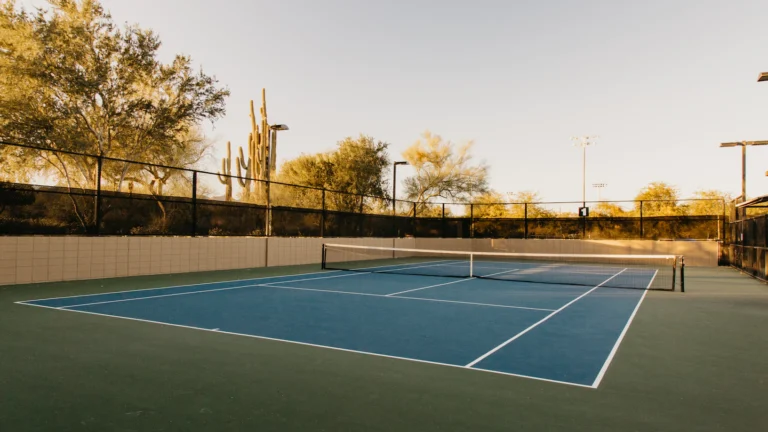
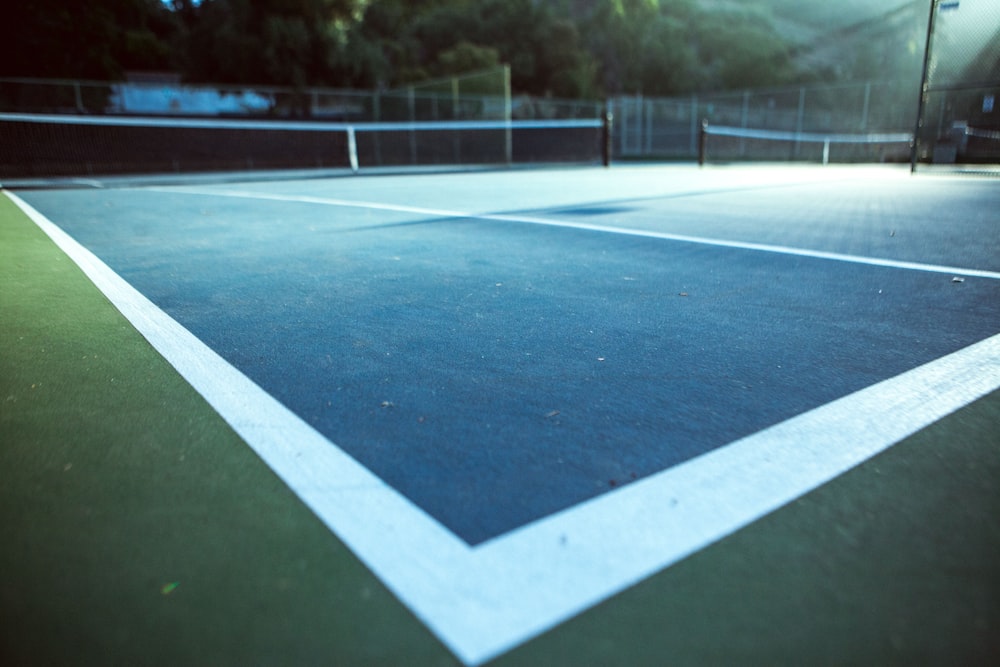
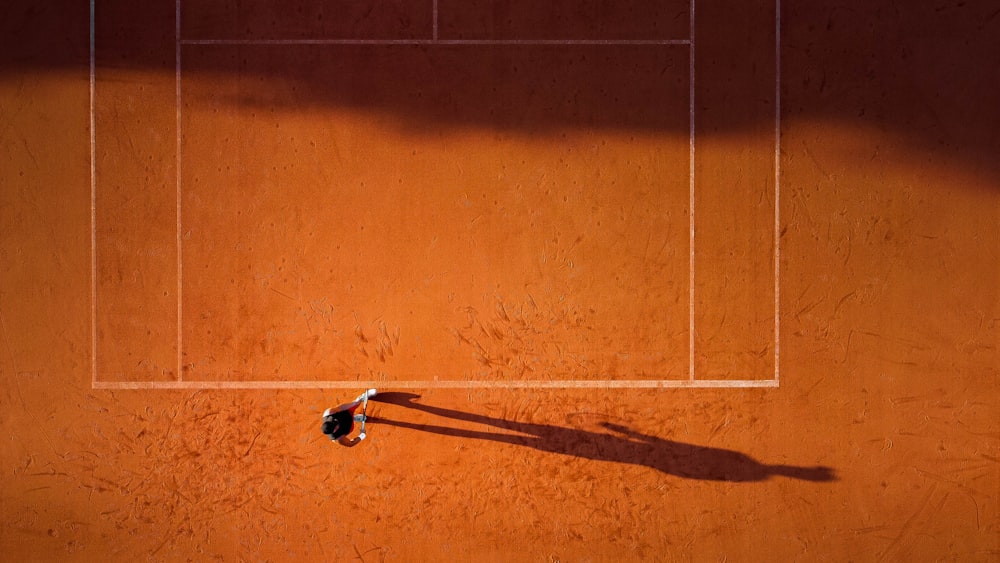
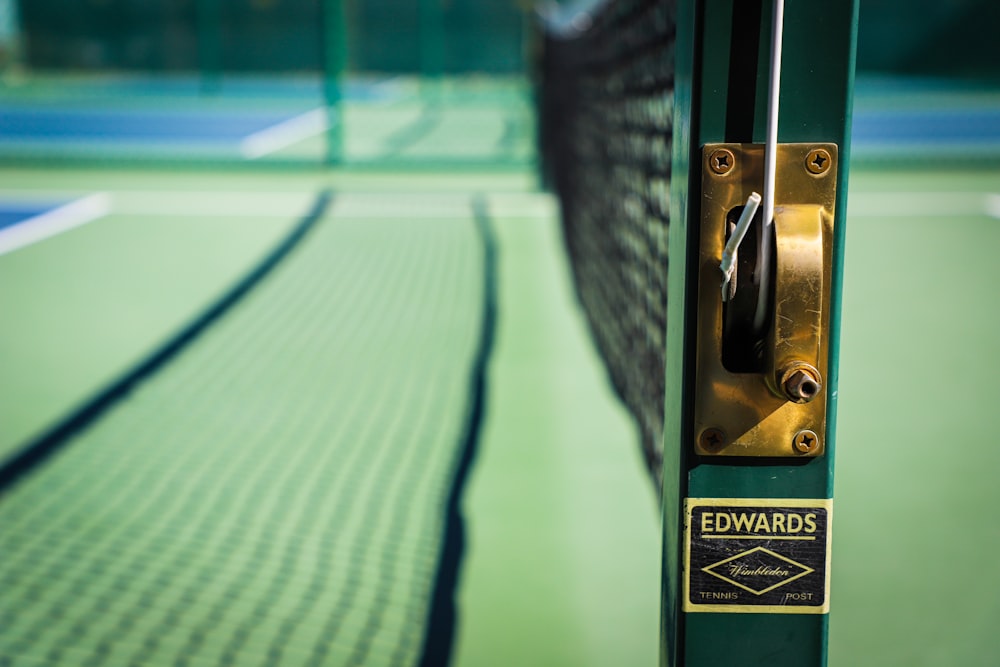

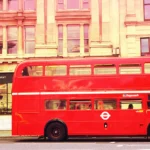
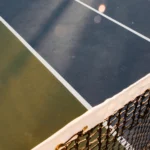
Comments are closed.